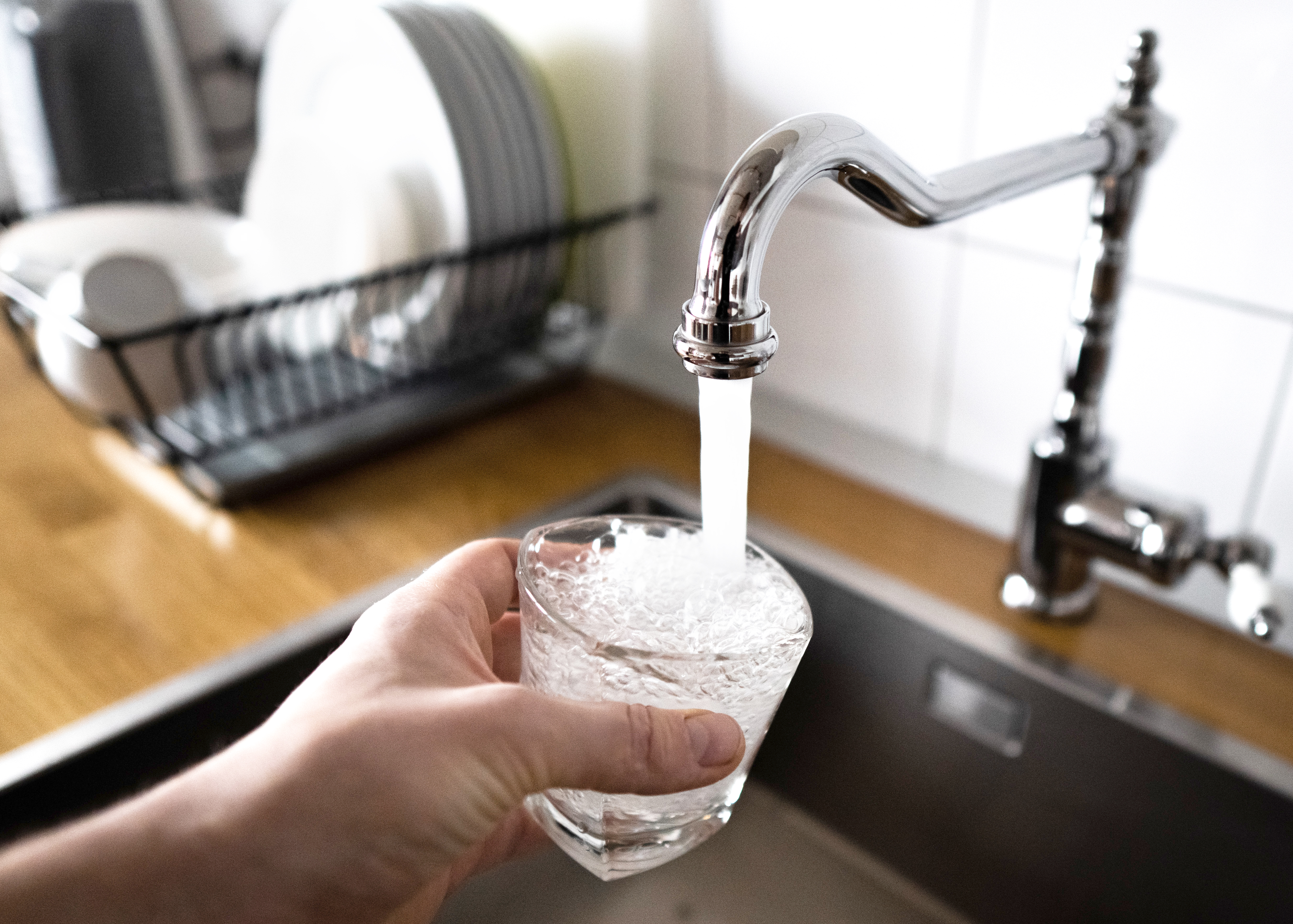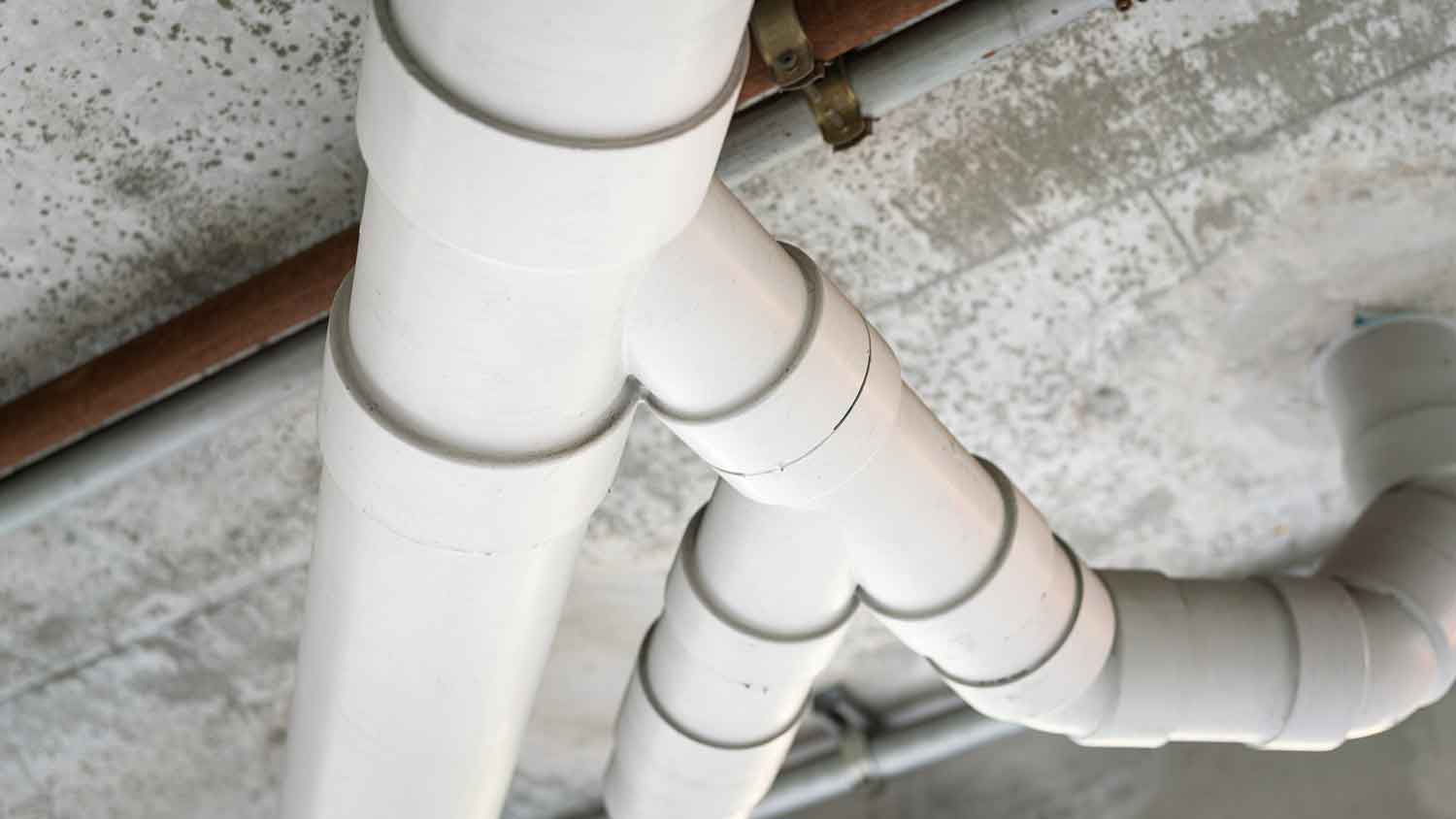
Learn about main water line repair costs in Columbus and what affects pricing to be prepared before you start getting estimates.
Unclog a whole-house flush fail


Clogs in toilets, drain lines, and sewer mains are the usual culprits.
Pipe damage, blocked vents, septic tanks, and water supply can also be to blame.
You can diagnose and fix some problems, but you’ll need a pro for others.
Prevent toilet troubles by flushing only waste and toilet paper and doing routine maintenance.
If you’re having trouble with all of the toilets in your house not flushing, the problem likely isn’t your toilets at all. Instead, plumbing pipe clogs, pipe damage, septic tank and drain field issues, and even a blocked pipe vent could be the cause. Here, we discuss the eight most common reasons for house-wide toilet problems and what you can do to avoid flush frustrations.
If your toilets aren’t flushing but the rest of your plumbing is working just fine, rule out the remote possibility that you have clogs in multiple toilets. It’s rare to have more than one toilet clogged at the same time, but it’s not impossible, especially if you flush flushable wipes (which usually shouldn’t be flushed) or other items that aren’t meant to go down toilets.
Try to unclog the toilets using a plunger. If that doesn’t work and you are comfortable using a toilet snake or auger, give one of those a try. If your toilets are still clogged, call a local toilet repair service.

If two or more toilets aren’t working, a drain line blockage might be to blame. All the drains on a single floor of your house will feed into a shared drain line, so if it’s blocked, you’ll have problems with more than one fixture.
One way to test this is to flush a toilet while watching a shower drain. Shower drains are lower to the floor than toilet bowls, so water backs up there first. If water bubbles up in the shower, it’s likely a drain line clog stopping water from flowing out of the house. You’ll need to call a pro for this type of clog, since no DIY tools can get far enough into the pipe to clear it.
Every plumbing line in your home connects to a single sewer line that removes water and waste. If you suspect a sewer line clog and have a two-story home, ask a family member or friend to help you perform this simple test: Have one person flush an upstairs toilet while the second person watches a first-floor shower drain. If the drain bubbles after the flush, you are almost certainly dealing with a sewer line clog.
These clogs often lodge deep in the sewer line, so no amount of plunging, DIY snaking, or drain cleaner will clear them. Instead, call a plumber or drain cleaning service to help.
Main plumbing lines are utility-owned pipes, usually located under city streets, where sewer lines from all attached homes empty into the municipal waste-water system. A blockage in the main sewer line can prevent wastewater from flowing out of several to all neighboring homes. If you and your neighbors notice slow drains and water backing up in sinks and bathtubs, a main line blockage is likely to blame. You can’t diagnose and fix the problem yourself as it’s generally up to your local water treatment service to fix it.
If you have a septic tank, a problem in the drain field or a full tank can cause backups in your house. Signs include sewage odors in the yard, standing water over the septic tank, and even sewage backing up into your home.
If you suspect a septic tank issue, call a local septic tank company for an inspection. If your tank is full, they will need to pump it. If they find a problem with your drain field, they’ll need to repair or replace it to fix the current problem and prevent future ones.

If your toilets flush but don't refill or take a long time to fill, the issue could be related to your water supply. If your water pressure is too low to refill the tank, a shut-off valve in your home or the toilets is closed, or you have a clog in supply pipes that prevents water from flowing at a high enough rate, you will have problems with toilets flushing and refilling. You may also notice low water pressure in faucets and appliances that use water.
First, verify that all water supply valves in your home and on the toilets themselves are open and working correctly. If your home has a water pressure regulator, be sure it’s working. If you don’t know whether you have one or how to check it, contact your water company if you’re connected to a public utility. If neither of those are the problem, look for visible leaks that could be stealing water pressure from the line.
Still stumped? Call a local plumber.
Old pipes and those that are damaged or corroded are more likely to clog or collapse, which leads to leaks and blockages that can only be fixed with pipe repairs or replacement. If you have frequent plumbing clogs, reduced water pressure, unexplained wet spots in your lawn, or other plumbing issues that you can’t explain, call a pro to diagnose the problem.
Vent pipes allow sewer gasses to escape and balance the air pressure in home plumbing systems. But when they become blocked, it can prevent toilets from flushing and make your home’s drainage system run slower. Signs of a blocked vent pipe include gurgling sounds when you flush, a toilet that fills up with water then slowly drains or struggles to finish flushing, and slow draining water pipes throughout your entire home.
If vent pipes are blocked, it’s possible to clear them yourself if you’re comfortable being on the roof. But because it can be a dangerous job, it’s best to call a pro. Look for blockages to the pipe including leaves, debris, or bird nests. Remove debris, and use a plumbing snake or auger for more stubborn clogs.
When you’re facing toilet flushing problems, your first job is to figure out what’s going on. It’s almost always due to one of the issues above, so take steps to determine the problem yourself or call a local pro for help. Most plumbers charge between $100 and $250 for a service call, and the average toilet repair costs between $150 and $360.
Until you fix the problem, avoid using or flushing toilets or putting more water down drains. This will help prevent overflows and may make repairs easier.
Prevention is the best course for toilet flushing problems. Here’s what to avoid and what to do:
Simply put, if it isn’t human waste and toilet paper meant for your type of sewer or septic system, don’t flush it. Avoid these top clog causers in particular:
Baby wipes, sanitizing wipes, or “flushable” wipes (no matter what the packaging says)
Paper towels
Personal hygiene products
Diapers
Fat, oils, grease, food, or cooking waste
Bandages, dental floss, cotton balls, and cotton swabs
Plastic bags
Cat litter (even if it’s labeled flushable)
Conscientious flushing also prevents clogs at local wastewater treatment plants and keeps the whole system running better. According to the Responsible Flushing Alliance, non-flushable items and trash cause 98% of clogs.
Don’t wait for a plumbing problem to call your plumber. Regular maintenance can keep your plumbing system flowing smoothly and your toilets flushing. This might include septic tank pumping (if you have one), drain and sewer line inspections, line cleaning, hydrojetting, and other preventative steps.
From average costs to expert advice, get all the answers you need to get your job done.

Learn about main water line repair costs in Columbus and what affects pricing to be prepared before you start getting estimates.

Discover the leading factors affecting your main water line replacement cost in Columbus, including length, material selection, and installation details.

Learn how much plumbers cost in Columbus, Ohio. Discover pricing for faucet repairs, pipe work, and emergency services, plus how you can save money.

Fixing a leaky faucet starts with knowing which type of faucet you have. Follow these steps to learn how to fix a leaky faucet in no time.

Is installing a pot filler over the stove worth the cost? We have everything you need to know, including pros, cons, costs, and answers to your common questions.

A clogged toilet can be embarrassing and even dangerous. Learn these tips to unclog a toilet, whether or not you have a plunger on hand.